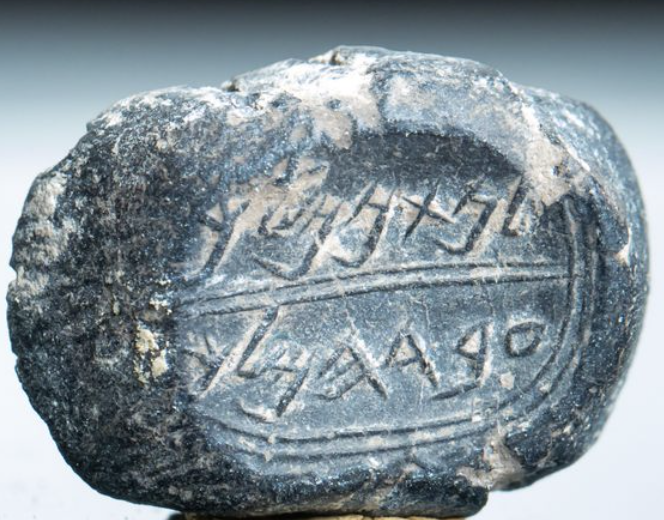Did you know that when you are in Israel you will be experiencing two days at once? Israel follows both the Gregorian calendar and the Hebrew calendar, so each day actually has two dates at one time! But what does that mean? What is the Hebrew calendar, how does it work and what are the differences between it and the Gregorian calendar?
The Hebrew calendar is a lunar based calendar that has evolved over the millennia, with many influences from the Babylonian calendar. The Gregorian calendar is a solar calendar. According to the Gregorian calendar we are in the year of 2020 A.D., but we are in the year AM 5780 according to the Hebrew calendar, beginning on September 29th, 2019 at sunset. It will end on September 18th, 2020 at sunset. It is mostly used in Israel now as a means of keeping the Jewish observances as prescribed in the Old Testament.
As you can see, there’s a difference between the amount of days in the Hebrew and Gregorian calendars. During a standard year, the Hebrew calendar can have between 353-355 days and on a leap year, there can be between 383 and 395 days. It is quite a difference! This is all part of rules setup to make up the difference to keep the calendar correct.
These rules can be very confusing to the layperson. The lunar system the Hebrew calendar follows is that following the 29 day cycle of the moon. The solar calendar just looks at how long it takes for a full trip of the earth around the sun and arbitrarily makes how many days are in each month. Most years have 12 months in them, but occassionally a 13th month is added to the Hebrew calendar. This is called Shanah Me’uberet, or “pregnant year”. This is akin to the Gergorian’s “Leap Year” but instead of one day it’s a whole month.
Months of the Hebrew Calendar
The Torah makes it very clear when certain observances are to be held and those dates stand firm even today. One of the most miraculous parts of the Jewish story is that even during the diaspora, they were never fully assimilated into other cultures and were able to maintain their own culture, traditions and even calendar over thousands of years and miles.
The Hebrew calendar months are as follows:
Nissan: 30 days and begins in spring. Contains Pesach or Passover and in Christian faith, Easter. It is referred to by name in Neiamiah 2:1 and Esther 3:7.
Iyar: 29 days and begins in spring. Iyar is a Babylonian word meaning “blossom” in reference to the flowers of spring. Before Babylonian captivity it was referred to as Ziv which means “light or glow”. Ziv is identified in 1 Kings 6:1. A notable holiday in this month is Independence Day which falls on 5 Iyar. According to the Gregorian calendar it happened on May 14th, but Israel uses the Hebrew calendar for it’s observance of when to celebrate it. This years celebration took place April 29th-30th.
Sivan: 30 days beginning in late spring, early summer. It means “season, time”. This month marks Shavuot (6-7 Sivan) and also Pentecost on the same days. Shavuot marks when the Torah was given to Moses. It is also called the “Feast of Weeks”. Pentecost is when the apostles were descended upon by the Holy Spirit and were able to spread the Gospel at the festival so everyone could understand in their native tongue (Acts 2:1-31).
Tammuz: 30 day summer month. It was named for the Babylonian goddess, evidence of the strong influence of the Babylonian calendar from the time of their captivity. Tammuz is the month of the sin of the golden calf, in which Moses broke the tablets of the 10 Commandments in response to.
Av: 29 day summer month. Av is time of sorrow in Jewish history. It was when Aaron died and both Temples were destroyed.
Elul: 29 day summer month. This month is seen as a time of preparation for the High Holy Days to come.
Tishri: 30 day late summer or fall month. Tishri is considered the new year of the civil calendar in Israel and Judaism. This is when the High Holidays occur which include Rosh Hashanah and Yom Kippur. Before the Babylonian captivity it was called Ethanim (1 Kings 8:2).
Cheshvan: 29-30 day month in the fall. The month was previously referred to as “Bul” (1 Kings 6:38). They begin special prayers for rain in this month. This is the month Methuselah is believed to have died at 969 years of age.
Kislev: 29-30 days in the fall. This is the month of Hanukkah which always starts on 25 Kislev.
Tevet: 29 day month in the winter. Esther was taken to the king during Tevet, which led to her becoming Queen and saving the Jews.
Shevat: A 30 day winter month. This month is seen as the reawakening time of Israel and a month of heavy rain. A festival celebrating the gift of Trees is observed called Tu Bishvat. This day is a time when people plant trees, which were all but gone when the modern country of Israel was reinstituted.
Adar: Adar is a special month because there may be 1 or 2 Adars in a year, depending on if it is a leap year. If it is a leap year, it is Adar I followed by Adar Beit. If it is not a leap year, it is just Adar. Purim, the celebration of Esther’s saving of the Jewish people, is held in Adar as prescribed in Esther 9:1.
Today, the Gregorian calendar is largely used for the day-to-day lives of the Israeli people, but the Hebrew calendar is still a vital part of their culture and observances and is followed as well. So next time you are in Israel, remember that the day begins and ends at sunset and take of the dates on the Hebrew calendar you are there!
What month would you like to visit Israel? Plan your Holy Land Trip today!







